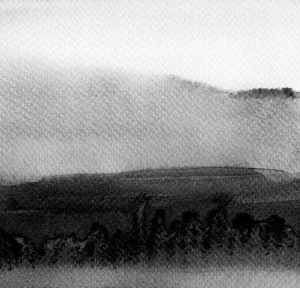The word “value” can take on many different meanings in the art world. There’s the monetary value that a piece of artwork may have; there is also the cultural value that a painting or drawing may have as well. For this blog post, however, we are concerned with the third type of value: that in relation to color and light.
The definition of value
There are seven elements of art, and value is one of those seven. Put simply, value is how light or dark something is. An object can have multiple values depending on the way light hits its surface. For instance, if you shine a light down on an apple, the top of the apple, facing the light, will be lighter than the bottom of the apple. These two parts of the apple, then, will have two different values, as will the parts in between. In order to replicate an object accurately, then, an artist must replicate the exact values that object may have.
Value scale
Value exists on a black and white scale that, technically speaking, can go on for infinity. However, most artists use a scale from 1 to 9, with 1 representing the lightest white and 9 representing the darkest black. Every color can be placed somewhere on this scale, as all colors, even if they’re not in black and white, have their own value.
Why do you need it?
In order for your artwork to appear realistic, you must create the illusion of space and depth. One way to do this is through linear perspective; another way is through value. Value creates the illusion of light and shadow so that your drawing appears as close to the real thing as possible.
At Creative Ventures Gallery, our beginner classes can teach you the basics of value as well as the other seven elements of art so that you can reach new creative heights. Give us a call today at 603-672-2500 to learn more.

